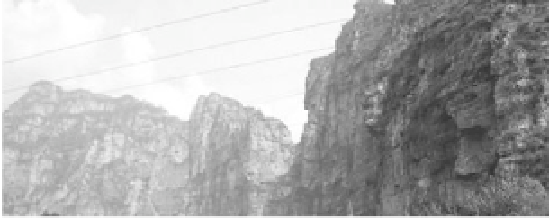Environmental Engineering Reference
In-Depth Information
Fig. 10.48
Spur dikes on the Lijiang River in south China used to promote the formation of low velocity habitats
Weirs
—Weirs also increase habitat diversity through creation of pool-riffle characteristics. Weirs
constructed of locally derived material are relatively low cost, and can be built from a variety of materials,
including logs, boulders, stones, and gabions. Wesche (1985) covers various designs in detail. Weirs can
be placed to break up the flow of the river and increase turbulence downstream perhaps scouring a pool,
whist impounding water upstream.
Figure 10.49 illustrates a weir placed on the Juma River in the suburbs of Beijing for creation and
maintenance of a habitat with stable low current and high depth of water. In dry seasons the weir
maintains a depth of water for fish and invertebrates to survive. Downstream from weirs sediment may
be eroded to form a scour hole and the sediment may be transported for a distance and deposit to form a
riffle-like feature. Weirs have been also used to impound flow to allow fish passage, to trap for gravel
spawning moving along high gradient streams, to trap finer sediments, to aerate the water, and to slow
Fig. 10.49
A weir placed on the Juma River in the suburbs of Beijing for creation and maintenance of a habitat
with stable low current and high depth of water. In dry seasons the weir maintains a depth of water for fish and
invertebrates to survive




Search WWH ::

Custom Search